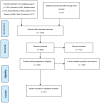Amenable Mortality in Children under 5: An Indicator for Identifying Inequalities in Healthcare Delivery: A Review
- PMID: 39062214
- PMCID: PMC11274674
- DOI: 10.3390/children11070764
Amenable Mortality in Children under 5: An Indicator for Identifying Inequalities in Healthcare Delivery: A Review
Abstract
Universal health coverage has been proposed as a strategy to improve health in low- and middle-income countries, but this depends on a good provision of health services. Under-5 mortality (U5M) reflects the quality of health services, and its reduction has been a milestone in modern society, reducing global mortality rates by more than two-thirds between 1990 and 2020. However, despite these impressive achievements, they are still insufficient, and most deaths in children under 5 can be prevented with the provision of timely and high-quality health services. The aim of this paper is to conduct a literature review on amenable (treatable) mortality in children under 5. This indicator is based on the concept that deaths from certain causes should not occur in the presence of timely and effective medical care. A systematic and exhaustive review of available literature on amenable mortality in children under 5 was conducted using MEDLINE/PubMed, Cochrane CENTRAL, OVID medline, Scielo, Epistemonikos, ScienceDirect, and Google Scholar in both English and Spanish. Both primary sources, such as scientific articles, and secondary sources, such as bibliographic indices, websites, and databases, were used. Results: The main cause of amenable mortality in children under 5 was respiratory disease, and the highest proportion of deaths occurred in the perinatal period. Approximately 65% of avoidable deaths in children under 5 were due to amenable mortality, that is, due to insufficient quality in the provision of health services. Most deaths in all countries and around the world are preventable, primarily through effective and timely access to healthcare (amenable mortality) and the management of public health programs focused on mothers and children (preventable mortality).
Keywords: amenable (treatable) mortality; healthcare service quality; perinatal period; respiratory disease; timely medical care; under-5 mortality; universal health coverage.
Conflict of interest statement
The authors declare no conflicts of interest.
Figures
References
-
- The World Bank Universal Health Coverage as a Sustainable Development Goal. 2023. [(accessed on 15 April 2023)]. Available online: https://datatopics.worldbank.org/world-development-indicators/stories/un....
-
- Barredo L., Agyepong I., Liu G., Reddy S. Objetivo 3—Los Objetivos de Desarrollo Sostenible y un 2030 Más Saludable. [(accessed on 15 April 2023)]. Available online: https://www.un.org/es/chronicle/article/objetivo-3-los-objetivos-de-desa....
-
- The Global Heatlh Observatory Child Mortality and Causes of Death. 2023. [(accessed on 15 April 2023)]. Available online: https://www.who.int/data/gho/data/themes/topics/topic-details/GHO/child-....
-
- Wang H., Abajobir A.A., Abate K.H., Abbafati C., Abbas K.M., Abd-Allah F., Abera S.F., Abraha H.N., Abu-Raddad L.J., Abu-Rmeileh N.M.E., et al. Global, regional, and national under-5 mortality, adult mortality, age-specific mortality, and life expectancy, 1970–2016: A systematic analysis for the Global Burden of Disease Study 2016. Lancet. 2017;390:1084–1150. doi: 10.1016/S0140-6736(17)31833-0. - DOI - PMC - PubMed
Publication types
LinkOut - more resources
Full Text Sources


